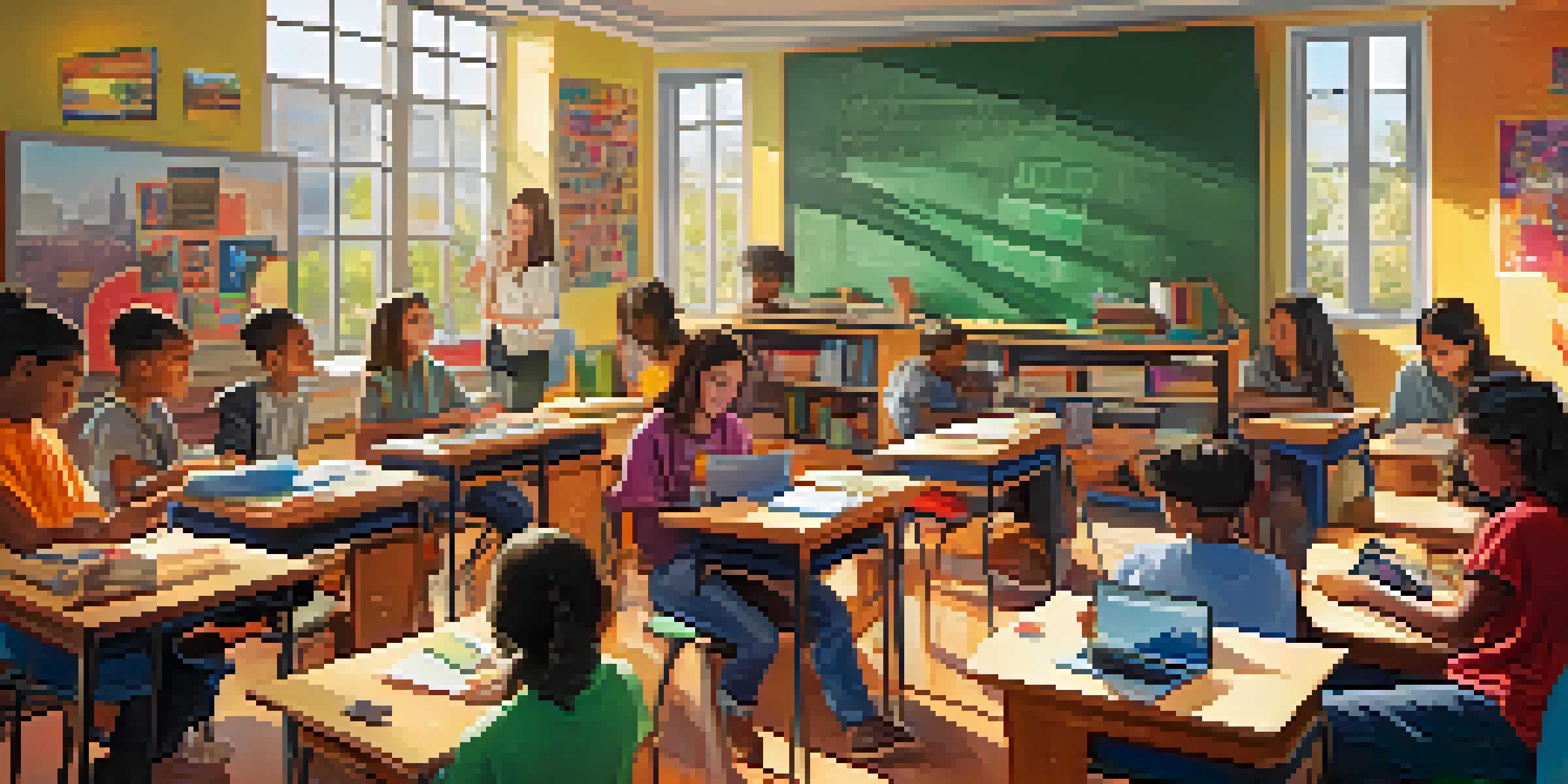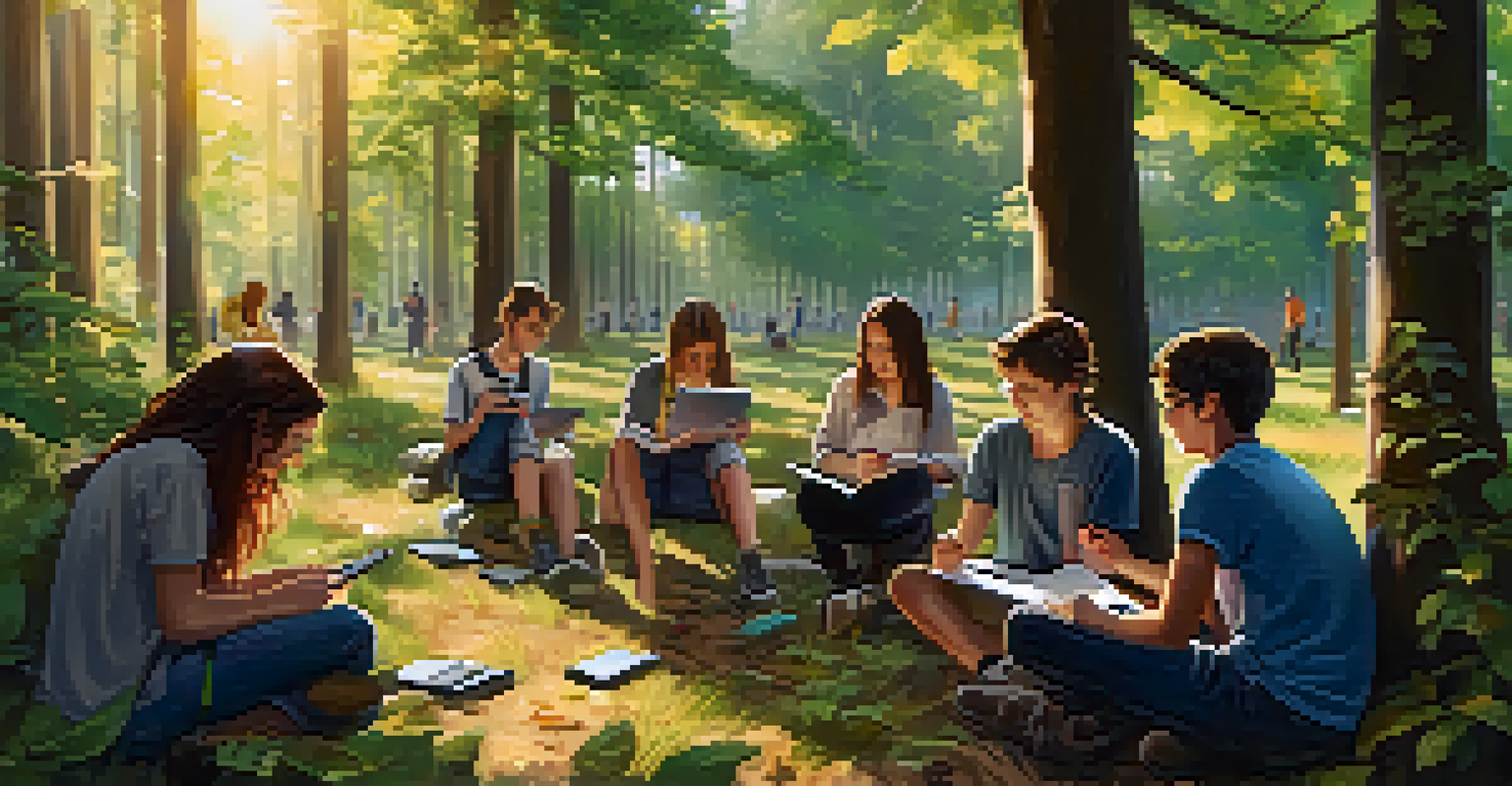Transmedia Learning: Encouraging Lifelong Learning Habits

Understanding Transmedia Learning and Its Importance
Transmedia learning refers to the use of multiple media platforms to enhance educational experiences. By integrating various forms of storytelling, such as videos, podcasts, and interactive games, learners can engage with content in dynamic ways. This approach not only caters to different learning styles but also encourages a deeper understanding of subjects.
Education is not the filling of a pail, but the lighting of a fire.
The importance of transmedia learning lies in its ability to create a richer narrative around educational content. For instance, a history lesson can be transformed from a textbook reading into a multi-layered experience that includes documentaries, virtual tours, and social media discussions. This multifaceted engagement fosters curiosity and invites learners to explore topics from various angles.
Moreover, transmedia learning supports lifelong learning habits by making education more accessible and enjoyable. When learners can choose how they engage with information, they are more likely to take ownership of their educational journey, paving the way for continuous growth and development.
How Transmedia Learning Promotes Engagement
Engagement is crucial for effective learning, and transmedia learning thrives on this principle. By utilizing different media formats, learners can find the methods that resonate with them the most, leading to a more personalized experience. For example, a student may prefer watching a video rather than reading a lengthy article, making the learning process more appealing.

Additionally, transmedia learning encourages collaborative engagement. When learners share their insights across platforms, such as discussing a book on a podcast or sharing artwork inspired by a lesson on social media, they create a community of learners. This collective interaction not only enhances understanding but also fosters a sense of belonging in the learning process.
Engagement through Diverse Media
Transmedia learning enhances engagement by allowing learners to explore content through various media formats that resonate with their personal preferences.
Ultimately, the varied formats and collaborative opportunities provided by transmedia learning spark curiosity and motivation. When learners are engaged, they’re more likely to develop a passion for education that extends beyond the classroom.
Cultivating Critical Thinking Skills Through Transmedia
One of the most significant benefits of transmedia learning is its ability to cultivate critical thinking skills. By presenting information through multiple lenses, learners are encouraged to analyze and evaluate content rather than passively absorbing it. This active engagement is essential for developing critical perspectives.
The more that you read, the more things you will know. The more that you learn, the more places you'll go.
For instance, consider a project where students explore environmental issues using articles, documentaries, and interactive simulations. They must assess the credibility of their sources and synthesize information from various platforms, honing their analytical abilities in the process. Such experiences prepare learners to tackle real-world problems with a critical eye.
Moreover, these skills are not limited to academic settings; they are invaluable in everyday life. Critical thinking enables individuals to navigate a world filled with information, make informed decisions, and engage in meaningful dialogues.
Fostering Creativity Through Diverse Media Experiences
Transmedia learning encourages creativity by allowing learners to express their understanding through various media. Whether through writing, visual arts, or digital storytelling, learners can choose formats that best showcase their ideas. This flexibility helps unlock their creative potential and fosters a love for exploration.
For example, a lesson on literature can be enhanced by allowing students to create a blog, produce a short film, or illustrate a graphic novel. Such projects not only make learning more enjoyable but also empower students to think outside the box. The freedom to choose how to express their knowledge can lead to innovative interpretations.
Cultivating Critical Thinking Skills
By presenting information through multiple perspectives, transmedia learning fosters critical thinking skills essential for analyzing and evaluating content.
In essence, transmedia learning transforms the educational landscape into a playground for creativity and exploration. When learners are given the tools to create, they are more likely to be invested in their educational journey.
Building Resilience and Adaptability in Learners
In our rapidly changing world, resilience and adaptability are essential skills for success. Transmedia learning promotes these qualities by encouraging learners to engage with diverse content and navigate various challenges. When faced with different platforms, learners must adapt their strategies and approaches, building their resilience in the process.
For instance, a learner exploring the topic of climate change might interact with infographics, participate in forums, and create presentations. Each format presents unique challenges, requiring the learner to adjust their methods and remain flexible. By overcoming these hurdles, learners develop a mindset that embraces change and uncertainty.
As a result, transmedia learning not only enhances knowledge acquisition but also prepares individuals for the complexities of the real world. Resilient learners are better equipped to face challenges head-on and thrive in dynamic environments.
Encouraging Lifelong Learning Through Continuous Exploration
Transmedia learning naturally encourages lifelong learning habits by instilling a sense of curiosity and exploration. When learners are exposed to various media and formats, they are more likely to seek out new information and experiences beyond their formal education. This intrinsic motivation fuels a passion for learning that lasts a lifetime.
Consider how a student who engages with a topic through transmedia might be inspired to pursue related interests independently. They may dive into podcasts, online courses, or local workshops, continuously expanding their knowledge base. This ongoing exploration emphasizes that learning is not confined to a classroom but is a lifelong journey.
Encouraging Lifelong Learning
Transmedia learning promotes lifelong learning by inspiring curiosity and exploration beyond formal education, empowering individuals to pursue their interests independently.
Ultimately, transmedia learning fosters a culture of inquiry and exploration, empowering individuals to take charge of their education. Such habits not only enhance personal growth but also contribute to a more informed and engaged society.
Practical Tips for Implementing Transmedia Learning
Implementing transmedia learning in educational settings can be straightforward with a few practical tips. First, educators should focus on integrating diverse media formats that align with their learning objectives. By combining videos, articles, podcasts, and interactive tools, they can create a comprehensive learning experience that caters to various preferences.
Next, encourage collaboration among learners by creating opportunities for them to share their insights and creations across platforms. This could include group projects that utilize different media or online discussions where students can exchange ideas. Such collaboration not only enriches the learning experience but also strengthens community bonds.

Lastly, keep the focus on fostering curiosity and exploration. Encourage learners to pursue their interests and seek out additional resources. By nurturing a mindset of inquiry, educators can help cultivate lifelong learning habits that extend far beyond the classroom.